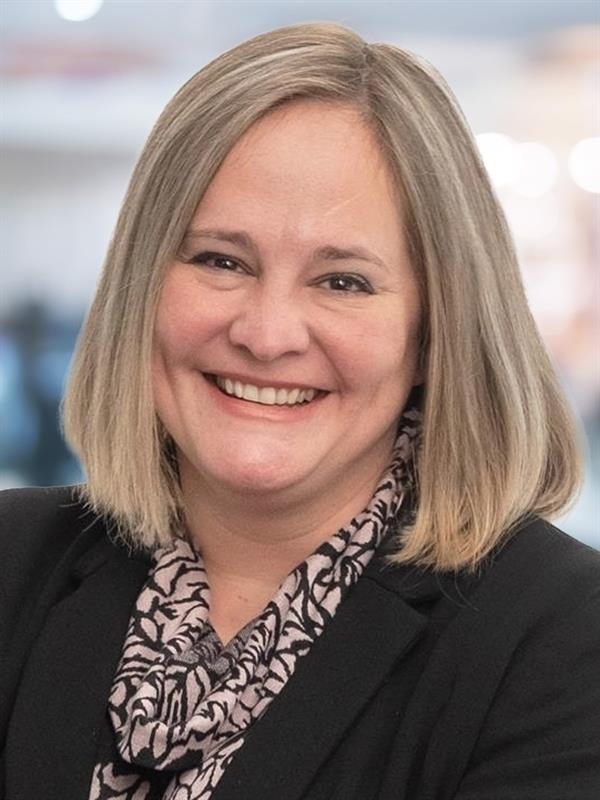For those with the means to do so, the idea of bequeathing a legacy to future generations can be an appealing way to make an ongoing positive impact. However, the world of philanthropy can be challenging to navigate — especially for those new to it.
In this scenario, we learn about the rewards and challenges of leaving a philanthropic legacy through Amar and Anju Patel, who built wealth through long and successful law careers and wanted to help better their community in retirement.
The Patel children, Maya and Rohan, are adults with good educations and stable jobs; neither was counting on a financial windfall from their parents. Instead, the family agreed that Amar and Anju should use the wealth they amassed to honour their charitable values and leave a legacy when they pass on.
In keeping with their passion for education, the couple wanted to support young people who cannot afford post-secondary studies. While they preferred to target their funding to students seeking a law degree, their children suggested they should keep the cause more general.
Amar and Anju's initial research uncovered numerous options for charitable giving in Canada. They were pleased to learn of the opportunities available — but also unsure which ones aligned with their financial goals and values. They reached out to MNP's Family Office and Tax teams for support.
It's vital to determine the necessary resources to ensure a secure future in retirement — and to clearly define aspirations (if any) for children, grandchildren, or even great-grandchildren down the line.”
Laying the groundwork
The couple’s first meeting was with Hayley Maschek, a Tax Advisor who works closely with MNP’s Family Office team. Instead of diving straight into their charitable plans, Hayley asked Amar and Anju to take some time to clarify their financial needs in retirement.
“For families that choose to establish a philanthropic legacy during their lifetime, there is more to the equation than how to structure the gift and where to donate the funds,” says Hayley. “It's also vital to determine the necessary resources to ensure a secure future in retirement — and to clearly define aspirations (if any) for children, grandchildren, or even great-grandchildren down the line.”
Hayley guided Amar and Anju through an initial financial strategy which formed the basis for calculating the wealth they could allocate to philanthropic causes. This thoughtful planning process helped the Patels unlock the potential of their charitable vision and ensure it leaves a legacy for generations.
Reviewing the options
After completing the initial discovery process, Hayley introduced the Patels to the two main options they could leverage to channel their philanthropy. The first was via a public foundation or donor-advised fund.
"A public foundation is a registered charity that distributes grants or funds to other registered charities or qualified recipients,” says Hayley. “A donor-advised fund (DAF) is a philanthropic account held and managed by a public foundation which may have an affiliation with a financial institution. Individuals or families contribute assets such as cash or securities to the DAF and receive a tax receipt for their donation."
She advised the Patels that, in this scenario, they could recommend how specific charitable organizations or causes should grant the funds. The public foundation responsible for managing the DAF may choose to facilitate donations based on these recommendations.
Hayley then explained the Patels’ second option: a private foundation.
"A private foundation is a legal entity established by the donor(s) to engage in philanthropic activities. It is governed by a board of directors or trustees, composed of family members, who control the foundation's assets and decision-making processes," says Hayley.
“This option offers several benefits that make them attractive to philanthropists, including greater individual control over how and when funds are deployed. That allows the directors/trustees (i.e., donors) to make decisions aligned with their values and vision.”
The Patels liked the idea of having a more active role in managing investments and being able to directly oversee the charitable activities undertaken by a foundation of their own. They were also excited by the idea that Maya and Rohan could play a role in decision-making, fostering a shared purpose among the family.
Still, Hayley informed them that establishing a private foundation comes with certain costs. The Patels would have to pay for the up-front investment to establish the foundation and obtain charitable registration. Further, she explained that private foundations have ongoing obligations, such as holding annual meetings and filing requirements, which may incur additional administrative and legal fees.
"The primary benefits of a public foundation and DAF is that they are relatively easy to establish and allow donors to start their philanthropic endeavours quickly,” says Hayley. “
The Patels mulled their options and asked Hayley and her team to run the numbers. They found that a public foundation and donor-advised fund would be cost-effective for small-scale giving — potentially benefitting the Patels in the short term. However, because Amar and Anju planned to make significant donations throughout their lives, the fees associated with a DAF would likely exceed the cost of establishing a private foundation.
While Maya and Rohan were both on board with their parent’s philanthropic plans, they were also keen to have a say in the management and allocation of funds. Primarily, they worried that a public foundation and DAF would significantly reduce their potential involvement.
Hayley advised them that it would depend on the fund they chose. If the family leaned toward a public foundation and DAF, the selection process would require thoughtful weighting of their desired involvement alongside the family’s other priorities.
Moreover, the children continued to insist that Amar and Anju broaden the scope of their philanthropic efforts. The family worried their inability to agree on a specific cause would lessen their potential impact.
"Our experience is that many families are reluctant to confine themselves to just one cause,” says Hayley. “As advisors, we can assist with establishing a flexible mandate (i.e., a gifting policy) so that the charity's activities can expand over time."
“Some families are more interested in comparing the tax implications of making donations at a later stage versus initiating philanthropic efforts immediately. It depends on their values, capabilities, and priorities.”
Strategies for maximum philanthropic and tax impact
One of the benefits of philanthropic giving is the potential tax benefit. By partnering with knowledgeable advisors, would-be philanthropists like the Patels can align their altruism with tax-effective strategies.
"There isn’t a one-size-fits-all approach,” says Hayley. “Each family will have a different situation, so family business advisors utilize various strategies to maximize tax efficiency. Typically, we employ modelling techniques to evaluate several scenarios, then recommend the one most likely to help them achieve their goals."
The Patels were keen to start their philanthropy as soon as possible. Hayley advised them there may be more benefits to reducing current taxes by giving immediately rather than utilizing gifts for tax offsets after death.
“That’s not to say the immediate route is right for everyone. Some families are more interested in comparing the tax implications of making donations at a later stage versus initiating philanthropic efforts immediately. It depends on their values, capabilities, and priorities.”
Asset evaluation
In assessing how best to support that approach, Hayley took a deeper look at the Patels’ asset mix to determine which sources of wealth (e.g., stocks, bonds, real estate, cash, etc.) would offer optimal tax efficiency for donations. The couple was heavily invested in the stock market, which she advised could provide a good tax result.
"Publicly traded securities are often areas of focus for us as advisors due to their potential tax benefits and ability to generate a fair market value tax credit,” says Hayley. “Individuals may tax on capital gains by contributing publicly traded securities while receiving a tax credit to offset other taxes owing."
Insurance donations
Hayley also realized Amar and Anju were over-insured and could benefit from donating excess policies to charity. Doing so would allow them to kick off their philanthropic efforts and potentially provide an immediate donation receipt.
“When considering donating excess insurance policies, it is essential to address the management of ongoing premium payments. The donor(s) can choose to continue to make contributions, which would maximize the financial impact of their gift, or have this become the charity's responsibility,” says Hayley.
Building a legacy
After thoroughly reviewing the options, the Patels ultimately decided their vision would be best served by moving forward with a private foundation. The family is now in a position to run their private educational foundation, which Maya and Rohan can continue to operate for the next generation of students.
MNP remains closely connected to the family in an advisory role. Our team guides the financial and administrative aspects of the foundation and ensures the Patels continue to utilize their assets in the most tax-efficient manner. When Amar and Anju eventually retire, they will meet with Hayley again to ensure the mission and funding of the charity are still aligned with their goals and that the charity is financially sustainable in the decades to come.

Next article - Family ties: sustaining legacy in family business through clear governance
Family businesses are unique in their blend of personal relationships, shared history, and common goals. At the best of times, those qualities can make the journey all the more rewarding. It can also bring about some distinct communication, governance, and management challenges.
Other articles
Nurturing a legacy: Empowering your children through planning and education
Succession: Navigating the transition of a family business to the next generation
Smooth transitions: Making the most tax efficient exit through advanced business planning
The power of giving: Creating a philanthropic family legacy
Family ties: Sustaining legacy in family business through clear governance
Maximizing the multiple: How savvy business owners get top dollar for their business



